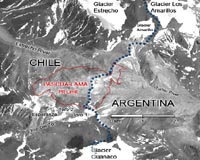| . |  |
. |
San Diego CA (SPX) May 13, 2009 Rare and unique ecological communities will be lost if oceanic islands aren't adequately considered in a global conservation plan, a new study has found. Although islands tend to harbor fewer species than continental lands of similar size, plants and animals found on islands often live only there, making protection of their isolated habitats our sole chance to preserve them. Many conservation strategies focus on regions with the greatest biodiversity, measured by counting the number of different plants and animals. "Normally you want to focus on the most diverse places to protect a maximum number of species," said Holger Kreft, a post-doctoral fellow at the University of California, San Diego and one of the two main authors of the study, "but you also want to focus on unique species which occur nowhere else." To capture that uniqueness, Kreft and colleagues at the University of Bonn, UC San Diego and the University of Applied Sciences Eberswalde used a measure of biodiversity that weights rare species more than widespread ones. They carved the terrestrial realm into 90 biogeographic regions, calculated biodiversity for each, then compared island and continental ecosystems. By this measure, island populations of plants and vertebrate animals are eight to nine times as rich. Their results, plotted on global maps, will be reported in the Proceedings of the National Academy of Sciences. The southwest Pacific island of New Caledonia stands out as the most unique with animals like the kagu, a bird with no close relatives found only in the forested highlands that is in danger of extinction, and plants like Amborella, a small understory shrub unlike any other flowering plant that is thought to be the lone survivor of an ancient lineage. Fragments of continents that have broken free to become islands like Madagascar and New Caledonia often serve as a final refuge for evolutionary relicts like these. The source of diversity is different on younger archipelagos formed by volcanoes such as the Canary Islands, the Gal�pagos and Hawaii which offered pristine environments where early colonizers branched out into multiple related new species to fill empty environmental niches. The new measure doesn't distinguish between the two sources of uniqueness, which may merit different conservation strategies. Although islands account for less than four percent of the Earth's land area, they harbor nearly a quarter of the world's plants, more than 70,000 species that don't occur on the mainlands. Vertebrate land animals - birds, amphibians, reptiles and mammals - broadly follow this same pattern. "Islands are important and should be part of any global conservation strategy," Kreft said. "Such a strategy wouldn't make any sense if you didn't include the islands." Threats to biodiversity may also rise faster for islands than for mainlands, the team reports. Scenarios based on a measure of human impact projected to the year 2100 warn that life on islands will be more drastically affected than mainland populations. "That threat is expected to accelerate particularly rapidly on islands where access to remaining undeveloped lands is comparatively easy" said Gerold Kier, project leader at the University of Bonn and lead author of the study. Expanding farmlands, deforestation, and other changes in how people use land are among the alterations expected to cause the greatest damage. The researchers also considered future challenges posed by climate change and report mixed impacts. Rising sea levels will swamp low-lying areas and smaller islands, but the ocean itself is expected to moderate island climates by buffering temperature changes. "Although disruptions to island ecosystems are expected to be less severe than on the continents, climate change remains one of the main threats to the biodiversity of the Earth," Kier said. "If we cannot slow it down significantly, protected areas will not be much help." "We now have new and important data in our hands, but still have no simple solutions for nature conservation," Kreft said. "In particular, we need to answer the question how protected areas with their flora and fauna can complement each other in the best way. The part played by ecosystems, for example their ability to take up the green-house gas carbon dioxide, should be increasingly taken into account." Share This Article With Planet Earth
Related Links University of California - San Diego Dirt, rocks and all the stuff we stand on firmly
 Under Andean ice, a golden prize
Under Andean ice, a golden prizeSantiago (AFP) May 13, 2009 An ambitious gold mining project in northern Chile, high up in the Andes close to ancient glaciers, is finally getting underway amid the economic downturn despite fears from environmentalists. Assurances the vast project will create some 5,000 badly needed jobs, have failed to overcome skepticism that the project, more than 16,000 feet (5,000 meters) above sea level, could impact on the vast ... read more |
|
| The content herein, unless otherwise known to be public domain, are Copyright 1995-2009 - SpaceDaily. AFP and UPI Wire Stories are copyright Agence France-Presse and United Press International. ESA Portal Reports are copyright European Space Agency. All NASA sourced material is public domain. Additional copyrights may apply in whole or part to other bona fide parties. Advertising does not imply endorsement,agreement or approval of any opinions, statements or information provided by SpaceDaily on any Web page published or hosted by SpaceDaily. Privacy Statement |